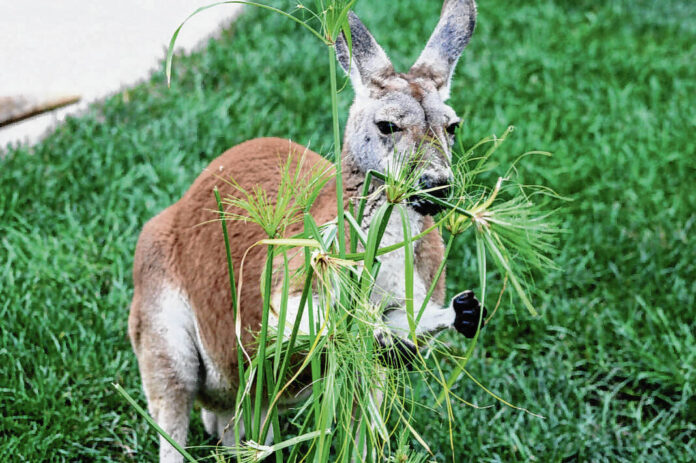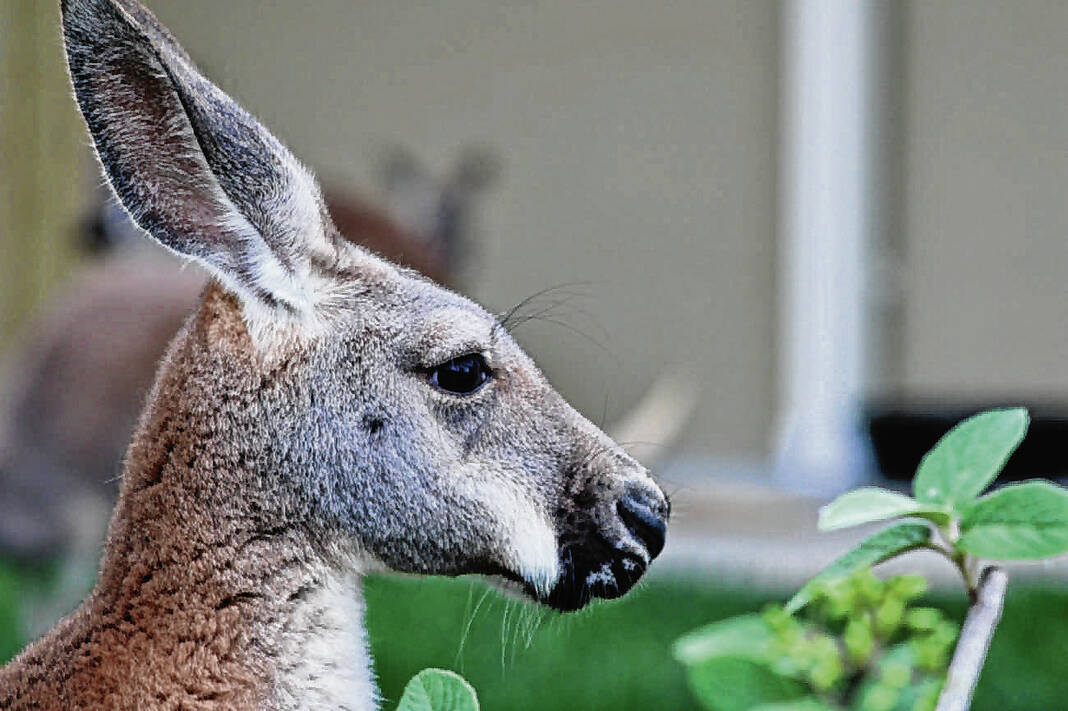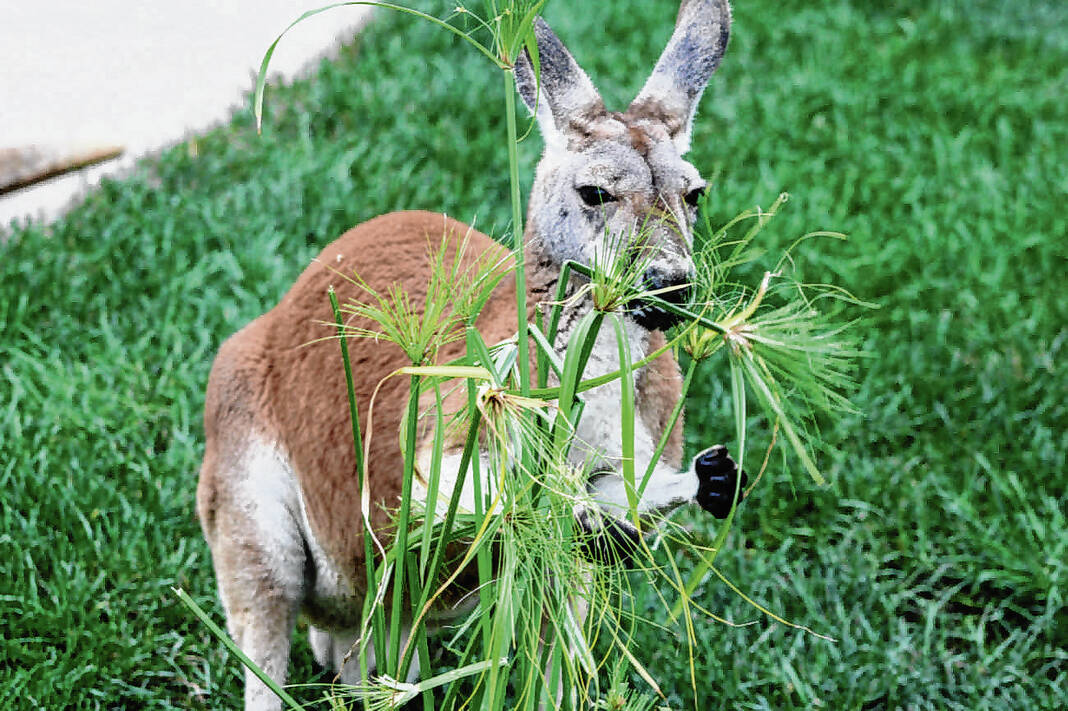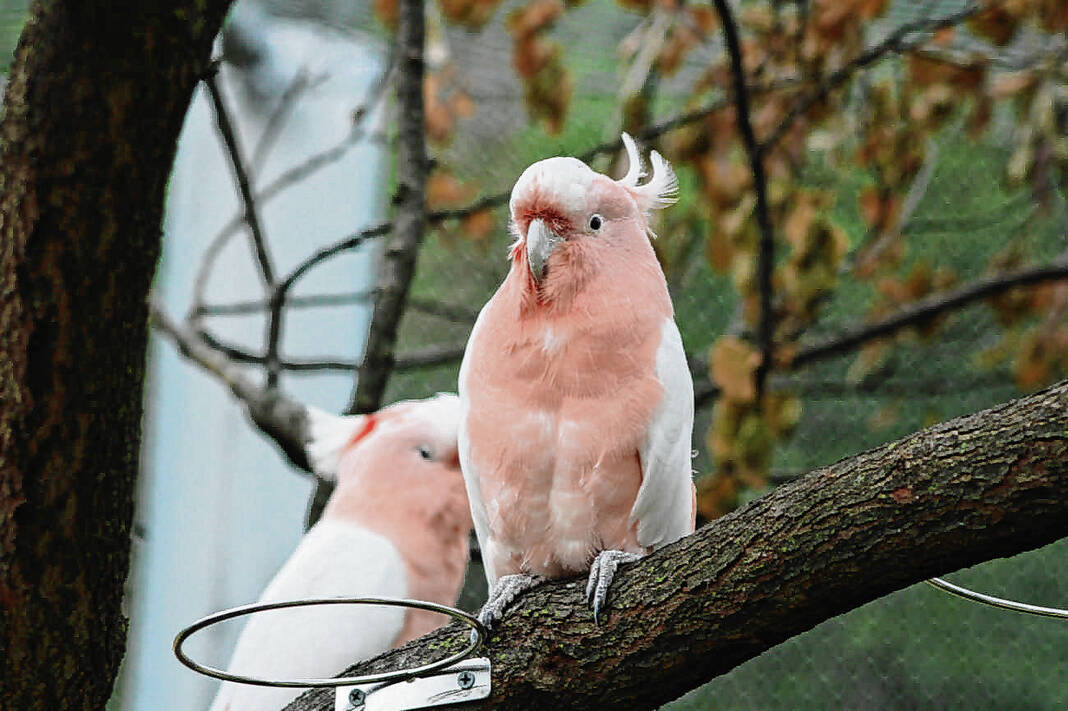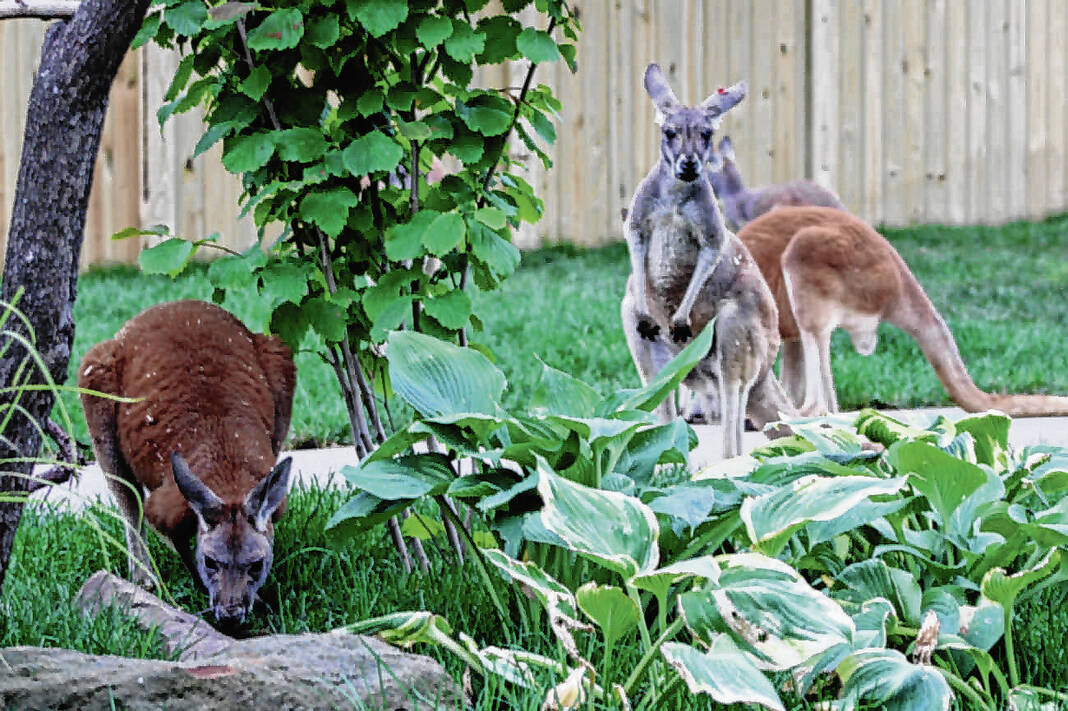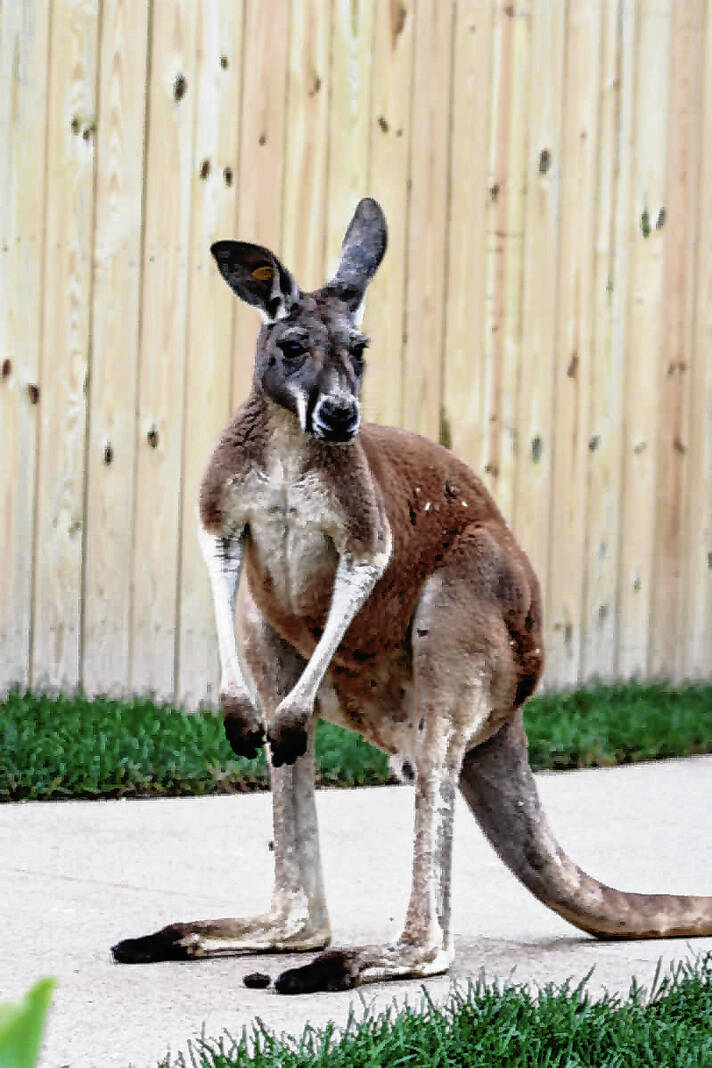The furry bolt of lightning bounded across the grassy lawn, crossing just feet from where the group of onlookers stood.
The red kangaroo, like the 12 others living in the Indianapolis Zoo’s new Kangaroo Crossing exhibit, is free to roam among the visitors who step into the enclosure.
Designed to give guests an interactive experience with the Australian animals, some lucky people might even have the chance to pet one of the ‘roos.
“Just being in close proximity, and being able to mingle in and amongst them, and having birds here around them, the whole experience is pretty cool,” said Holly Balok, senior keeper at the Indianapolis Zoo. “It’s cool to watch animals on exhibit, but when you have the opportunity to have them be practically right next to you, it’s a new experience.”
Kangaroo Crossing opened to the public on June 18, allowing zoo visitors to walk around the habitat with the spring-loaded marsupials. In trees and on fences around the kangaroos, a variety of cockatoos fly freely over head.
The new exhibit is specially designed to give people an up-close experience with the animals, while also educating people about the threats they face in their native Australia.
“It’s going to be great for guests, because you’re immersed in the experience. The birds are going to be flying over you, you’re going to be able to get up close to them, so that’s going to be a really exciting addition,” said zoo curator Meagan Keen.
Kangaroos are the largest land mammal native to Australia, and more than 60 species of the animals and their smaller relatives roam the continent. Their signature hopping is a means to more efficiently travel across the landscape; the animals are unable to walk, instead using thick leg tendons to make high, fast and wide leaps.
Working with the animals has been fascinating, Balok said.
“Just the way they’re made, there’s nothing else like them on the planet. They’re unique to Australia, and just the way their bodies are built — the long legs, the long muscular tail — are special,” she said.
Red kangaroos are abundant in Australia, and the population is not threatened; however the animals have shown stress, both physically and reproductively, during drought, something that is more common with climate change.
The Indianapolis Zoo acquired seven female and six male kangaroos for the new exhibit, many of which came from zoos that have up-close exhibits such as Kangaroo Crossing, Balok said.
“We tried to really choose kangaroos that would be OK in an exhibit like this, in a walk-through. Kangaroos don’t normally have a habitat like this; they usually have a very large personal space bubble. They’re prey animals, so they don’t usually like people to get too close,” she said.
Displays around the newly created space provide information on kangaroo habitats and behavior. Visitors can learn about newborn kangaroos — no bigger than a jellybean — and how the joeys spend about eight months in their mother’s pouch.
A cement path winds through the grass, bushes, trees and hostas in the habitat. Kangaroos move throughout the space, munching grass and other plant materials, watching as people walk around them.
“This is kind of what happens in Australia — this is normal urban wildlife for them,” Balok said.
Joining the kangaroos in the new space is a variety of cockatoos, which are prevalent throughout Australia. Special netting keeps the birds from flying out of the exhibit, and the birds swoop through the habitat from fenceposts to tree branches.
Even before the see the cockatoos, though, you’re likely to hear them, Keen said.
“They’re very loud. That’s probably the first thing guests will notice. You’re going to hear them from across the zoo,” she said.
Once you adjust to their cacophonous squawks, though, people will be enthralled with the color and behavior of the different birds.
“We have several different species, so you’re going to get to see a variety of cockatoos when you come through. They range from your bright pink, colorful Major Mitchell’s cockatoos to the staple when you think of Australia, which is the sulfur crested, the white with the bright yellow,” Keen said.


